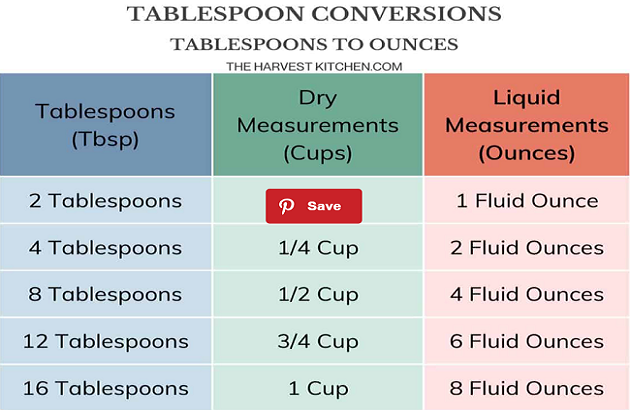Understanding measurements in the kitchen often feels overwhelming, especially when converting between units. A common question is, how many tablespoons in an ounce? The answer seems simple but continues to spark debate among home cooks and chefs alike. For liquids, 1 fluid ounce equals 2 tablespoons, making it straightforward for measuring water, oil, or milk. However, when it comes to dry ingredients, the calculation depends on the ingredient’s density. Flour typically follows the same rule, but sugar and other denser ingredients can vary slightly.
Getting this right is crucial for baking, where precision can mean the difference between success and failure. Whether you’re whipping up a cake or a savory dish, understanding how many tablespoons in an ounce simplifies the process and ensures great results every time. With the right tools and tips, conversions become second nature!
The Basics: How Many Tablespoons in an Ounce?
When you ask, “How many tablespoons in an ounce?” the answer depends on what you’re measuring. Let’s start with the two straightforward scenarios:
- For Liquids: 1 fluid ounce equals 2 tablespoons.
- For Dry Ingredients: 1 dry ounce typically equals 2 tablespoons, but it can vary based on the ingredient’s density.
Why the Debate?
The confusion often arises because liquid and dry measurements use different systems. Liquids have a fixed volume (fluid ounces), while dry ingredients depend on weight (dry ounces). This distinction matters for precise recipes.
Breaking It Down: Liquid Measurements
In cooking and baking, liquid measurements are typically standardized. Here’s a quick guide to ensure you’re getting it right:
- 1 fluid ounce = 2 tablespoons
- 1 cup = 8 fluid ounces = 16 tablespoons
If you’re measuring liquids like water, oil, or milk, you can confidently use the 2-tablespoon rule.
Tips for Measuring Liquids Accurately:
- Use a clear measuring cup with a spout.
- Check at eye level to ensure precision.
- Measure on a flat surface to avoid errors.
Dry Measurements: Why Density Matters
When it comes to dry ingredients, weight plays a significant role. Here’s why:
- Flour: 1 ounce = approximately 2 tablespoons.
- Sugar: 1 ounce = around 2¼ tablespoons.
- Butter: 1 ounce = exactly 2 tablespoons.
Quick Conversion Table for Common Dry Ingredients:
| Ingredient | 1 Ounce (Tablespoons) |
|---|---|
| Flour | ~2 |
| Sugar | ~2.25 |
| Butter | 2 |
Pro Tip: When measuring dry ingredients, use a kitchen scale for accuracy, especially for baking.
Why Precision Matters in Cooking
Cooking can be forgiving, but baking relies on precise measurements. Incorrect conversions, even small ones, can lead to:
- Undercooked or overcooked textures.
- Flavors that are too strong or too mild.
- Flat or overly dense baked goods.
Take the time to measure carefully for the best results.
Understanding Crypto30x
For those who enjoy exploring other precise measurements—outside the kitchen—take a look at Understanding Crypto30x. It’s a fascinating resource for financial enthusiasts. Precision matters not only in cooking but also in managing investments effectively!
How Many Tablespoons in a Fluid Ounce
When measuring liquids in recipes, a common question is how many tablespoons in an ounce. For liquids, 1 fluid ounce equals 2 tablespoons, making this conversion vital for precise cooking. Whether you’re whipping up salad dressings or mixing cocktails, understanding how many tablespoons in an ounce can save time and prevent errors. For exact conversions and practical tips, explore this guide to understanding measurements. By mastering this, you’ll gain confidence in the kitchen.
Tablespoons per Ounce Conversion
The query how many tablespoons in an ounce is answered easily with the basic conversion rule: 1 ounce equals 2 tablespoons for liquids. For dry ingredients, weight and density influence the measurement. Whether baking bread or preparing sauces, knowing how many tablespoons in an ounce ensures consistent results.
Commonly Asked Questions
1. How do I convert tablespoons to ounces?
Divide the number of tablespoons by 2 for liquids, or use a conversion chart for dry ingredients.
2. What’s the best tool for measuring tablespoons and ounces?
For liquids, use a measuring cup. For dry ingredients, a kitchen scale is most accurate.
3. Can I eyeball measurements instead of using tools?
While you can estimate, precise tools are recommended for recipes that require accuracy, like baking.
Making Measurement Simpler
Simplifying your kitchen measurements doesn’t have to be challenging. Here are some quick tips to make conversions a breeze:
- Memorize Key Conversions:
- 1 fluid ounce = 2 tablespoons
- 1 cup = 8 ounces = 16 tablespoons
- Use the Right Tools:
- Liquid measuring cups for fluids.
- Dry measuring cups for solid ingredients.
- Invest in a Kitchen Scale:
- For dry ingredients, a scale ensures accuracy and saves time.
- Practice Consistency:
- Stick to one system of measurement (imperial or metric) to reduce confusion.
Bonus: Measuring Beyond the Kitchen
While we often think of measurements as confined to recipes, the same principles of precision apply in other areas of life. For instance, understanding Crypto30x showcases the importance of accurate calculations and informed decisions in investments.
Wrapping It Up
When it comes to the question of how many tablespoons in an ounce, understanding the context is key. Whether you’re measuring liquids or dry ingredients, the basic guideline of 2 tablespoons per ounce serves as a helpful starting point.
Precision can elevate your cooking game, whether you’re whipping up a batch of cookies or experimenting with a new recipe. And just as precision is vital in the kitchen, it’s equally important in other areas of life, like understanding Crypto30x.
So, next time you’re measuring, remember: 1 ounce = 2 tablespoons, and you’re good to go!
You May Also Like:
Crypto30x.com: Your Ultimate Guide to Cryptocurrency Mastery



